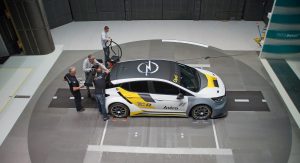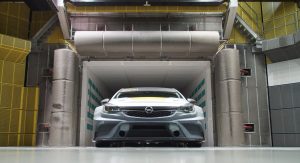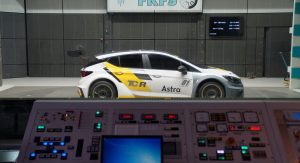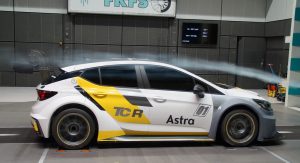In order to be successful in the Touring Car Racer Series, a vehicle has to have excellent aerodynamics and undergo meticulous wind tunnel testing.
Aerodynamic efficiency is the result of a well-balanced ratio of downforce and drag, which is something engineers need to keep in mind when building a car that’s meant to tackle high speed corners as easily as it blasts through main straights.
Opel claims that the reigning “Car of the Year 2016” already has an outstanding drag coefficient of 0.272, which makes it well-suited to serve as the base for a track-oriented car.
Compared to the production model, the TCR has gained 1,950 mm (76 inches) in width, the maximum permitted by the regulations. While the bumpers, fenders and side panels have been modified, it’s the front splitter and the rear wing that help create most of the downforce.
The rear wing needs to be carefully positioned so that it won’t protrude from the roofline. In order to figure out a compromise between drag and downforce, Opel engineers built the front splitter as flat as possible, though steep enough to keep the front axle stable under braking and prevent understeer.
As for gathering sufficient data, the team went to Stuttgart University and used their wind tunnel. “It has a rolling floor and can simulate speeds of up to 250 km/h. That makes it ideal for our purposes”, explained Opel Motorsport exec Dietmar Metrich.
Metrich, understandably, isn’t so keen on revealing specifics when it comes to the data and measurements found during testing.
“I can tell you this much: we feel perfectly prepared thanks to the excellent suitability of the base model. We will only find out where we stand when the cars compete on the race track but that makes the whole thing really exciting!”







